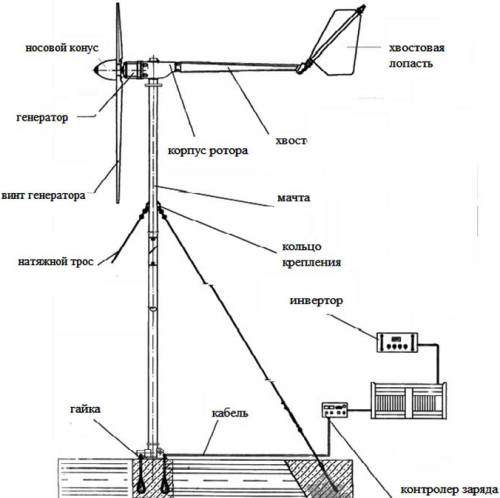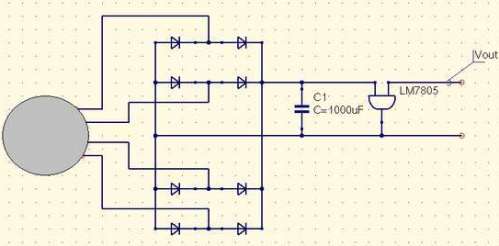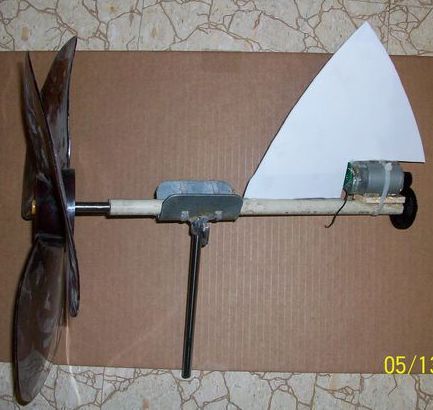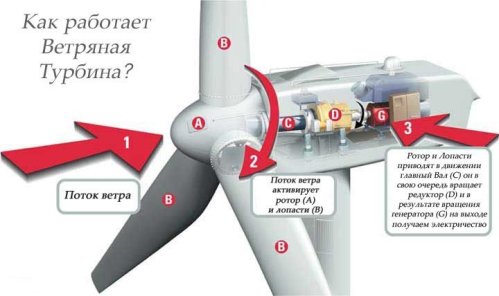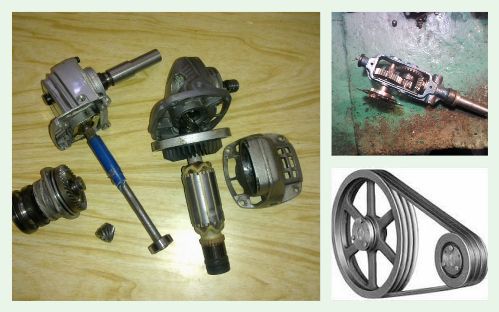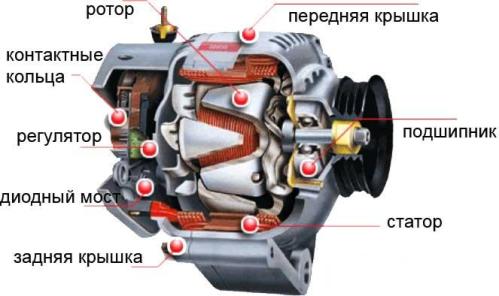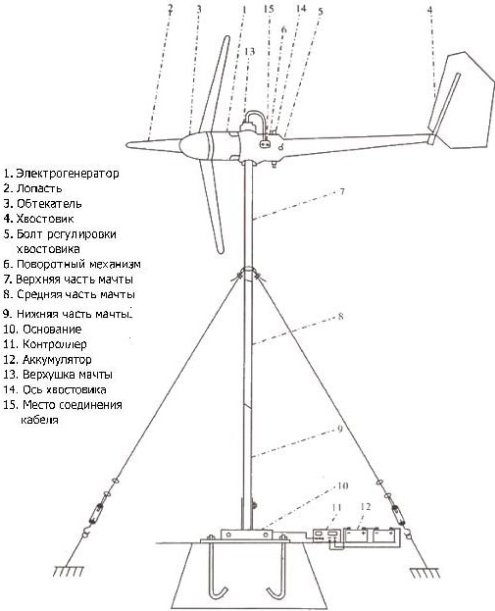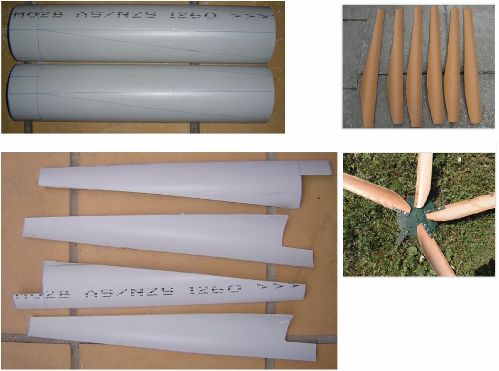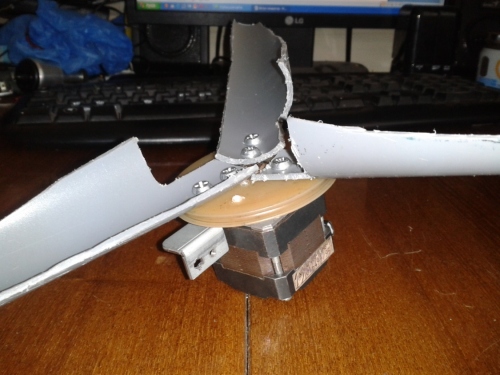Categories: Sharing experience, Autonomous power supply
Number of views: 30664
Comments on the article: 0
How to make a do-it-yourself wind generator
Wind is free energy! So let's use it for personal purposes. If the creation of a wind farm on an industrial scale is very expensive, because in addition to the generator, a number of studies and calculations are necessary, the state does not incur such costs, and for investors in the countries of the former USSR this, for some reason, does not cause much interest. In private, you can make a mini-wind turbine for your own needs. It is worthwhile to understand that the project of converting your home to alternative energy is a very expensive undertaking.
As already said: you need to make lengthy observations and calculations in order to find the optimal ratio of the sizes of the wind wheel and generator that is suitable for your climate, wind rose and average annual wind speed.
The efficiency of a wind power installation within one region can vary significantly, this is due to the fact that the movement of the wind depends not only on the climate zone, but also on the terrain.
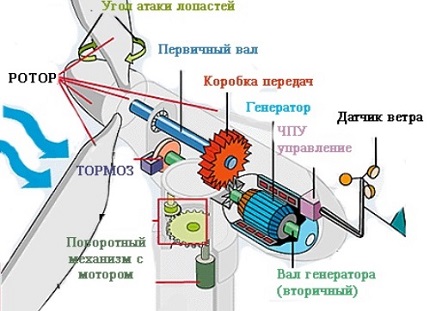
However, you can find out what wind energy is at a low cost by assembling a budget installation to power a low-power load, such as a smartphone, light bulbs or a radio. With the proper approach, you can provide electricity to a small house or a summer cottage.
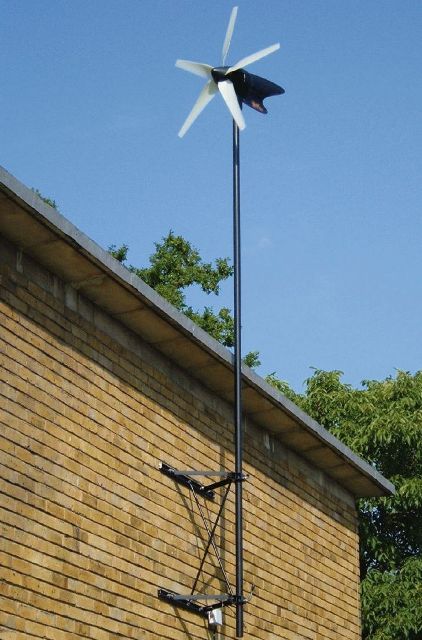
Let's look at how you can make a simple wind power installation with your own hands.
Low-powered windmills from improvised means
A computer cooler is a brushless motor that in its original form does not represent practical value.

It needs to be rewound, since in the original the windings are connected inappropriately. Winding coils alternately:
-
Clockwise;
-
Counterclock-wise;
-
Clockwise;
-
Counterclock-wise.

You need to connect adjacent coils in series, and it is even better to wind one piece of wire passing from one groove to another. In this case, select the thickness of the wire arbitrarily, it will be better if you wind as many turns as possible, and this is possible when using the least thin wire.
The output voltage from such a generator will be variable, and its value will depend on the speed (wind speed), install a diode bridge from Schottky diodes to straighten it to a constant, ordinary diodes will do, but it will be worse, because voltage from 1 to 2 volts will drop on them.
Lyrical digression, a bit of theory
Remember the magnitude of the EMF is:
E = BLV,
where L is the length of the conductor placed in a magnetic field; V is the rotation speed of the magnetic field;
When upgrading the generator, you can only affect the length of the conductor, that is, the number of turns of each of the coils. The number of turns determines the output voltage, and the wire thickness determines the maximum current load.
In practice, it is impossible to influence wind speed. However, there is also a way out of this situation, having learned the typical wind speed for your area, you can design a rotor suitable for revolutions for a wind power installation, as well as a gearbox or belt drive, to ensure sufficient revolutions to generate the voltage you need.
IMPORTANT: Faster does not mean better !!! If the speed of rotation of the wind generator is too high, its life will be reduced, the lubricating properties of the rotor bushings or bearings will deteriorate, and it will jam, and the winding insulation breakdown in the generator will most likely occur.
The generator consists of:
We increase the power of the generator from a computer cooler
Firstly, the more blades and the diameter of the wheel, the better, so look at the 120-mm coolers.
Secondly, we already said that the voltage depends on the magnetic field, the fact is that industrial high-power generators have field windings, and low-power ones have strong magnets. In the cooler, the magnets are extremely weak and do not allow achieving good results from the generator, and the gap between the rotor and the stator is very large - about 1 mm, and this is with the already weak magnets.
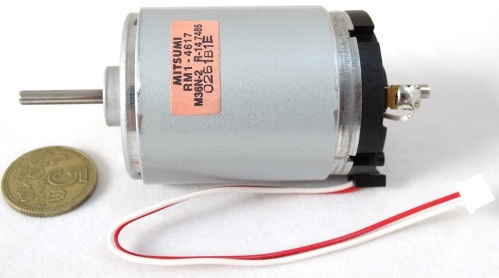
The solution to this problem is to radically change the design of the generator. Rather, only an impeller is required from a cooler; as a generator itself, we use a motor from a printer or any other household appliances. The most common brush motors with permanent magnet excitation.
As a result, it will look like this.
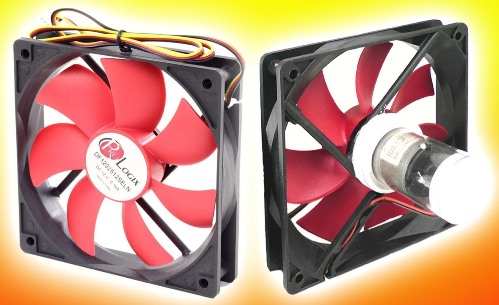
The power of such a generator is enough to power the LEDs, the radio. It will not be enough to recharge the phone, the phone will display the charging process, but the current will be extremely small, up to 100 Amperes, with a wind of 5-10 meters per second.
Stepper motor as a wind generator
A stepper motor is very common in computer and household appliances, in various players, floppy drives (old 5.25 ”models are interesting), printers (especially matrix ones), scanners, etc.
These motors without alterations can work as a generator, they are a rotor with permanent magnets, and a stator with windings, a typical connection diagram of a stepper motor in generator mode is shown in the figure.
A 5 Volt linear stabilizer, type L7805, is installed in the circuit, which will allow you to safely connect mobile phones to such a windmill to charge them.
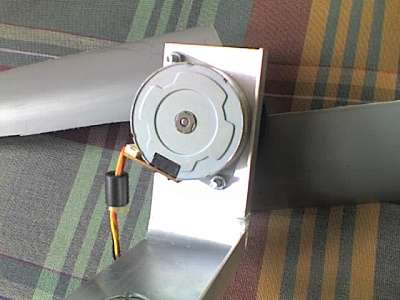
In the photo, a generator from a stepper motor with mounted blades.
The engine in a particular case with 4 output wires, the circuit, respectively, under it. An engine with such dimensions in the generator mode produces about 2 W in light winds (wind speed is about 3 m / s) and 5 m / s in strong winds (up to 10 m / s).
By the way, here is a similar circuit with a zener diode, instead of the L7805. Allows you to charge Li-ion batteries.

Improvement of a homemade windmill
In order for the generator to work more efficiently, you need to make it a guide shank and fix it on the mast movably. Then, when the wind direction changes, the direction of the wind generator will change. Then the following problem arises - the cable going from the generator to the consumer will be twisted around the mast. To solve this you need to provide a movable contact. A ready-made solution is being sold on Ebay and Aliexpress.

The bottom three wires - motionless, go down, and the upper bundle of wires - is movable, a sliding contact or a brush mechanism is installed inside. If you don’t have the opportunity to buy, be smart, and, inspired by the decision of the designers of the Lada car, namely the implementation of the movable contact of the signal button on the steering wheel and do something similar. Or use the pad from the electric kettle.
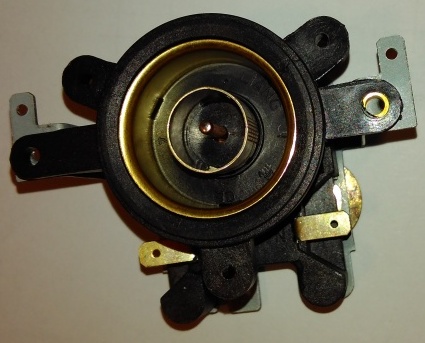
By connecting the connectors, you get a movable contact.
Powerful wind generator from improvised means.
To get more power, you can use two options:
1. A generator from a screwdriver (10-50 W);
2. Wind generator from a car generator.
From a screwdriver, you only need a motor, the option is similar to the previous one, you can use fan blades as a screw, this will increase the total power of your installation.
Here is an example of the implementation of such a project:
Pay attention to how the gear upshift is implemented here - the wind generator shaft is located in the pipe, a gear is located at its end, which transmits rotation to the smaller gear fixed to the motor shaft. An increase in engine speed also occurs in industrial wind turbines. Gearboxes are used everywhere.
However, in a homemade environment, manufacturing a gearbox becomes a big problem.You can remove the gearbox from the power tool, it is needed there to lower the high revolutions on the shaft of the commutator motor to the normal revolutions of the chuck on the drill, or the disc of the grinder:
A planetary gearbox is installed in the drill;
-
An angle gear is installed in the grinder (it will become useful for the installation of some installations and will reduce the load from the tail of the wind turbine);
-
Gear from a hand drill.
This version of a homemade wind generator can already charge 12 V batteries, however, a converter is needed to generate charging current and voltage. This task can be simplified by using a car generator.
Wind generator from car generator
The automobile generator consists of a stator with a three-phase winding, and a rotor with a brush assembly and an excitation coil. Such a generator is connected to the load via a diode bridge assembled according to the Larionov circuit, it is usually located on the back cover of the generator. See here for more details: How the car generator works and works
The advantage of such a generator is the ability to use it to charge car batteries, in principle, it is designed for this. Autogenerators have a built-in voltage regulating relay, which eliminates the need to buy additional stabilizers or converters.
However, motorists know that at low idle, about 500-1000 rpm, the power of such a generator is small, and it does not provide the proper current to charge the battery. This leads to the need to connect to the wind wheel through a gearbox or belt drive.
You can adjust the number of revolutions at a normal wind speed for your latitudes by selecting a gear ratio or using a properly designed wind wheel.
Useful Tips
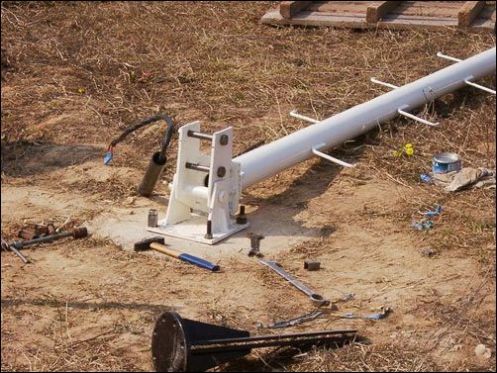
Perhaps the most convenient mast design for a wind turbine is the one shown in the picture. Such a mast is stretched on cables fixed on holders in the ground, which ensures stability.
Important: The mast height should be as large as possible about 10 meters. At higher altitudes, the wind is stronger, because there are no obstacles in the form of ground structures, hills and trees. In no case do not install a wind generator on the roof of your house. Resonant vibrations of fastening structures can cause the destruction of its walls.
Take care of the reliability of the carrier mast, because the design of the windmill on the basis of such a generator is significantly heavier and is already a pretty serious solution that can provide autonomous power supply of the cottage with a minimum set of electrical appliances. Devices that operate on 220 volts can be powered from an inverter 12-220 V. The most common version of such an inverter is uninterruptible power supply for pc.
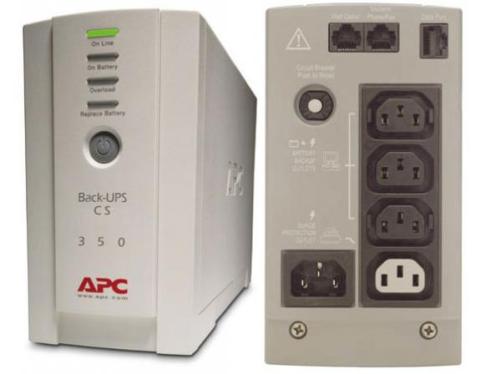
It is better to use diesel generators, incl. trucks, because they are designed to work at low speeds. On average, the diesel engine of a large truck operates in the speed range from 300 to 3500 rpm.
Modern generators produce 12 or 24 volts, and a current of 100 amperes has long been normal. After simple calculations, you can determine that such a generator will give you up to 1 kW of power as much as possible, and a generator from Lada (12 V 40-60 A) 350-500 W, which is already a pretty decent figure.
What should be a wind wheel for a homemade wind turbine?
I mentioned in the text that the wind wheel should be large and with many blades, in fact, this is not so. This statement was true for those micro-generators that do not claim to be serious electric machines, but rather copies for familiarization and leisure.
In fact, designing, calculating and creating a wind wheel is a very difficult task.Wind energy will be used more rationally if it is executed very accurately and the “aviation” profile is perfectly displayed, while it must be installed with a minimum angle to the plane of rotation of the wheel.
The real power of the wind wheels with the same diameter and different number of blades is the same, the difference is only in the speed of their rotation. The fewer the wings - the more revolutions per minute, with the same wind and diameter. If you are going to achieve maximum speed, you must mount the wings as accurately as possible with a minimum angle to the plane of their rotation.

Check out the table from a 1956 book, “Homemade Wind Farm,” ed. DOSAAF Moscow. It shows the relationship between wheel diameter, power and rpm.
At home, these theoretical calculations give little use, lovers make wind wheels from improvised means, the following goes:
-
Plywood;
-
Sheets of metal;
-
Plastic sewer pipes.
With your own hands, you can assemble a high-speed 2-4 vane wind wheel from sewer pipes, except for them you need a hacksaw or any other cutting tool. The use of these pipes is due to their shape, after trimming they have a concave shape, which ensures high responsiveness to air flows.
After trimming, they are fixed with BOLTS on a metal, textolite or plywood blank. If you are going to make it from plywood - it is better to glue and twist several layers of plywood with screws on both sides, then you can achieve rigidity.
Here is the idea of two bladed solid impeller for a stepper motor generator.
conclusions
You can make a wind power installation from small powers - units of watts, to power individual LED lamps, beacons and small equipment, to good power values in units of kilowatts, accumulate energy in the battery, use it in its original form or convert up to 220 volts. The cost of such a project will depend on your needs, perhaps the most expensive element is the mast and batteries, it can be in the range of 300-500 dollars.
See also at electro-en.tomathouse.com:


